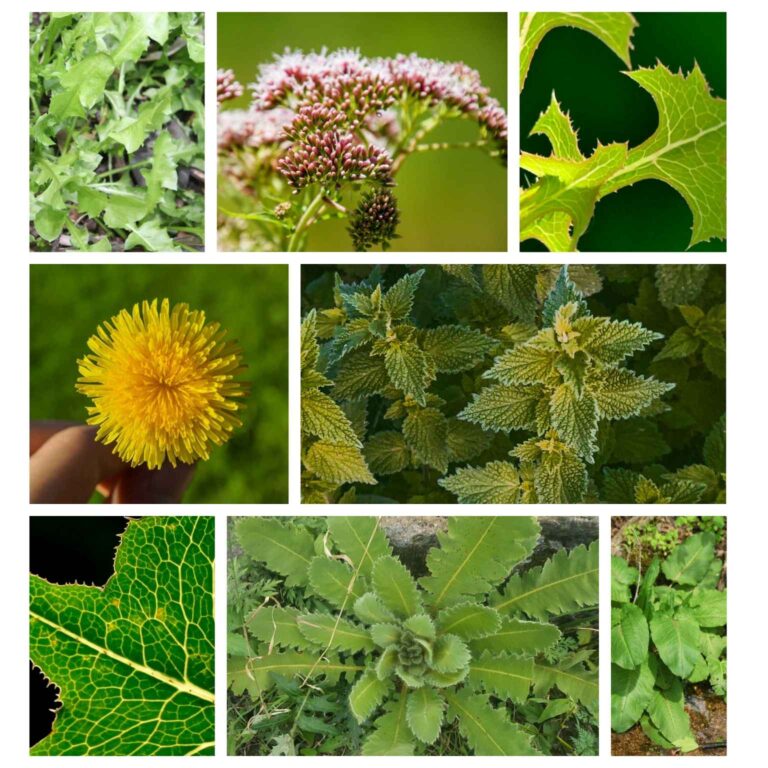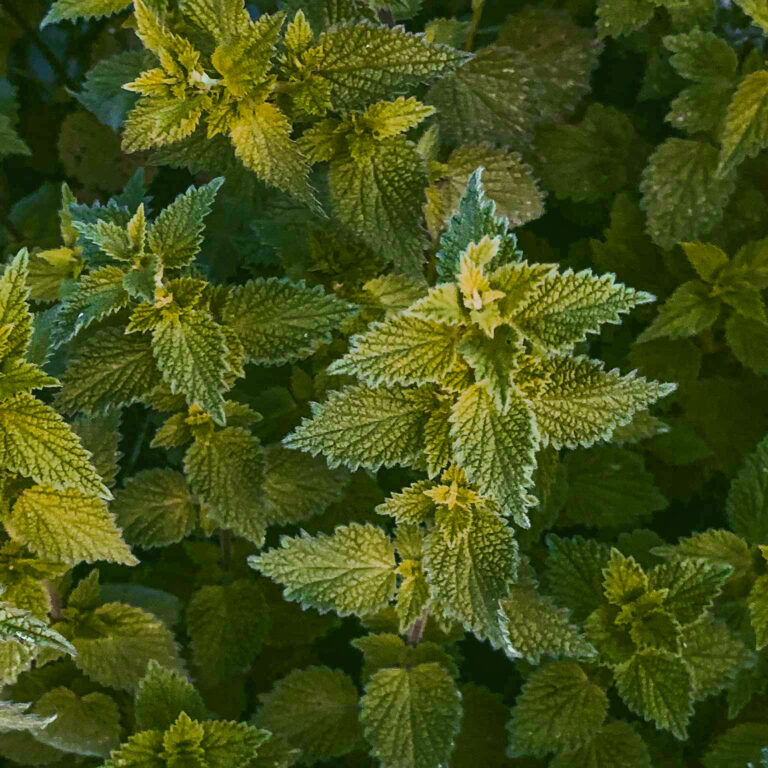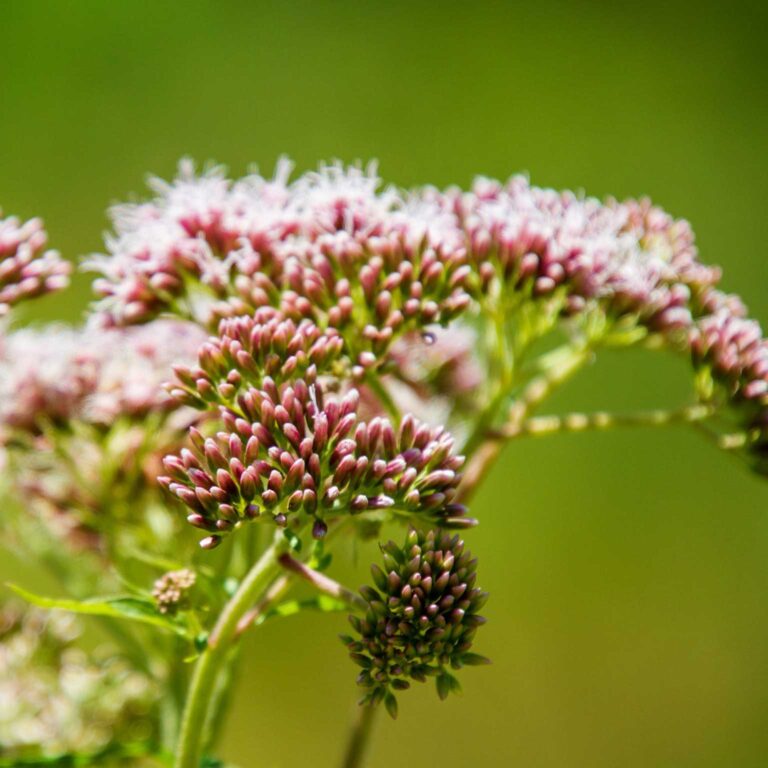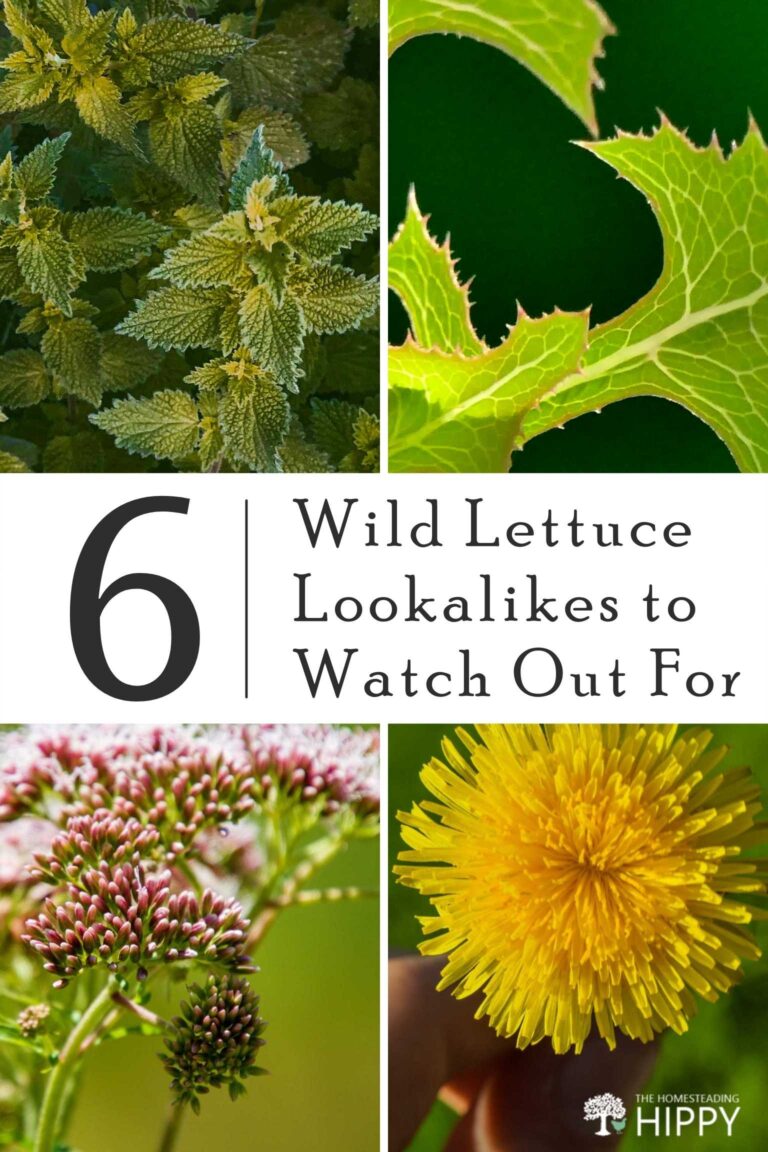Growing up on hiking trails, in campsites, and going to Scout meets every two or three weeks gave me a healthy respect for some of the dangers posed by Mother Nature.

Wild lettuce (Lactuca virosa) is a plant that’s technically a weed. It’s a member of the dandelion family and has been used in traditional medicine for centuries.
With that said, it is sort of dangerous, and you must know how to use it safely or you’re going to worsen your health problems. This plant goes by a variety of names, including:
- Bitter lettuce
- Opium lettuce
- Acrid lettuce
- Poison lettuce
When used correctly there are some medicinal uses for it, but there are many species and unfortunately, there are also plenty of lookalikes that may lead to a case of mistaken identity and lead to a rather unpleasant experience.
Identifying Wild Lettuce
There are a few identifying characteristics that will tell you whether you’ve found wild lettuce or not.
- Flowers: While flowers aren’t a part of every wild lettuce plant, the flowers that do form resemble dandelion flowers and are typically yellow, orange, or red.
- Roots: Wild lettuce typically has a brown or white taproot.
- Leaves: Almost always serrated and you can find hairs on the underside of the leaves and stems. They alternate and clasp at the stem. Breaking the stem results in a milky white sap/latex being leaked.
- Seeds: The seeds of wild lettuce plants are oval-shaped and flat.
Uses and Risks of Wild Lettuce
Wild lettuce has a few different chemicals in the sap/latex which have analgesic and sedative qualities; meaning it works to make you sleepy and is a pretty good pain killer – hence the name opium lettuce.
Now, there are also serious risks associated with using wild lettuce. For starters, it may react badly to any medication you’re already taking. While it’s not addictive, you can easily get too much in your system which can, in some cases, be fatal.
Like most herbs/edible plants, there are lookalikes that can be either edible or inedible and it’s important to know which is which.
1. Dandelion (Taraxacum officinale)
Dandelions have a similar leaf shape to that of wild lettuce, but the leaves aren’t always serrated, and they don’t have hairs on their undersides.
They typically stay close to the ground as a rosette whereas a wild lettuce plant grows to be quite tall with a large stalk. Dandelion flowers are yellow in color and similar to those of wild lettuce.
2. Sow Thistle (Sonchus)
Sow thistle has a similar leaf shape and a long stalk which, when ruptured, leaks a milky white sap.
With that said, the defining feature – the hairs on the underside of the leaves – isn’t present here either. The flowers, while similar, bloom at different times.
It’s considered in many places to be invasive as it tends to grow very quickly over a wide area. With that said, it is edible and was used as rabbit fodder for years; giving it the nickname ‘hare lettuce’ – that’s cool if I say so myself.

3. Stinging Nettle (Urtica dioica)
Also called the common nettle, stinging nettles have a similar leaf shape to wild lettuce and inexperienced foragers may mistake the two particularly since the stems and leaves are both covered in hairs – some of which come off when touched causing searing pain.
They can reach around 7ft. in height and are commonly found in Europe, Asia, and the western part of North Africa.
It’s got its own medicinal uses for things like urinary tract infections, diabetes, hay fever, and other things BUT there’s little scientific evidence to show that it works.
4. Blue Wild Lettuce (Lactuca biennis)
Blue wild lettuce is found in much of the USA, Canada, and Alaska. It has large, lobed leaves which look similar to the leaves of Lactuca virosa on a long stem and clusters of flowers that are bluish in color – hence the name ‘blue lettuce’.

5. Milkweed (Asclepias)
Okay, so milkweed is listed among lookalike plants but it doesn’t look anything like a wild lettuce plant. It has broad leaves with a long stem and leaks a milky sap/latex when the stem is broken – which is where it gets its name.
Now, while it looks nothing like a wild lettuce plant, I can see beginner foragers (people who are just starting out) mistaking it for wild lettuce.
Some species of milkweed contain cardiac poisons and are/were used by tribes in South America and Africa used them to poison arrows for hunting and fighting. If you’re judging by the leaves, they sort of resemble the leaves of a blue lettuce plant – without the large lobes.
6. Prickly Lettuce (Lactuca serriola)
Also called milk thistle, this one has a somewhat fetid smell and bitter taste to it and has been used culinarily (including the roots as a coffee substitute) and medicinally since ancient times.
The ancient Greeks used it as a treatment for eye ulcers and the Navajo used it to induce vomiting…lovely.
7. False Hawksbeard (Crepis japonica/Youngia japonica)
False Hawksbeard, also known as Oriental False Hawksbeard and formerly by another scientific name Crepis japonica, is an annual plant that produces small, flat-petaled symmetrical yellow flowers and will bloom all year long in hot, humid regions, although it blooms seasonally in the spring and summer in more temperate zones.
Its leaves have a rough, innately divided nature that makes them mistakable for wild lettuce by the uninitiated. You can easily identify this plant by the disc-shaped, dandelion-like flowers, and it’s slightly puckered, red-tinted edges on the leaves. It will usually grow up to about 2 feet tall when mature.
Although native to Eastern Asia, it is now found virtually all over the entire world where it is considered an invasive, persistent, and surprisingly tasty weed.
It’s especially pervasive in the American South, although several different varieties grow over the entire country elsewhere. Most varieties taste quite mild and make a good herb when properly cleaned and prepared, although a few variations are somewhat bitter.
Even more important, aside from its culinary applications, is the fact that False Hawksbeard has potent antiviral and antioxidant compounds that have shown to be highly effective health boosters.
8. Chicory (Cichorium intybus)
Chicory is a woody, perennial herb that grows all over much of the Eastern hemisphere and has been introduced to North- and South America.
A surprisingly popular salad vegetable, the plant is also notable for its use as a seasoning and ingredient in a variety of foods and beverages, from coffee substitutes to desserts. Very healthy, it has fans all over the world although the flavors it imparts can be an acquired taste: the bitterness of mature leaves can be reduced by cooking.
It is sometimes confused for wild lettuce because of its leaves, which have a thick, pronounced central stem and deeply pointed lobes on each side.
Depending on the variety, Chicory plants also produce pretty, small white, pink, or bright blue flowers. Stems are flexible but tough, and often hairy, and immature plants can top five feet in height.
In its range, chicory tends to be especially prevalent and persistent in areas that get high amounts of rainfall, so if you live in a rainy area you should become familiar with chicory and those pretty little flowers so you can more easily identify it. This is a great wild edible to find!
9. Pineapple Weed (Matricaria discoidea)
Pineapple Weed is typically found in Asia, although it has taken up residence as an invasive species and several parts of the US and the rest of North America, particularly the northern ranges going from California and Oregon all the way up to Alaska.
As the name suggests, Pineapple Weed has a particular trait: when crushed or broken, it smells just like pineapple! More than this, the plant is edible and nutritious, and is it commonly used in Asian cuisine as an herb for seasoning or directly as a salad vegetable.
However, mature leaves tend to taste somewhat bitter. The plant is also popularly used to make a sweet and fragrant herbal tea.
This plant can be mistaken for young wild lettuce because of its thick, irregular stalks and densely packed, small leaves.
10. Poison Hemlock (Conium maculatum)
One of the most infamous and also most common toxic plants in the world, and one that has an increasing foothold in the United States where it has been introduced. Poison hemlock can grow to be a massive 6-foot tall plant that sprouts large clusters of delicate, pretty white flowers.
But don’t let the good looks fool you, because all parts of the plant are highly toxic, containing various alkaloid poisons which can easily kill humans and animals alike. Even sap and other fluids produced by the plant can be absorbed through the skin and cause problems, so be careful!
It’s especially perilous for people seeking out wild lettuce because it belongs to the carrot family and strongly resembles Queen Anne’s Lace and other distant relatives, especially while young.
Although the mature plant is unlikely to be mistaken for wild lettuce by seasoned foragers, you must be absolutely sure you don’t harvest this one by accident.
11. Snakeroot (Polygala senega)
Snakeroot, also known as Mountain Flax, can be found all over the United States and is especially common in the South although its range stretches all the way up to Canada and west to beyond the Mississippi River.
You probably passed this plant in nature many times and didn’t even know what it was, or that it’s dangerous.
This is because it produces tight clumps of pretty and appealing pink or white flowers and deep green, gently cupped, broad leaves (a fact that sometimes leads it to be mistaken for wild lettuce).
The problem is that the plant is toxic, containing various compounds that can cause serious stomach pain and intestinal distress. Aside from nausea diarrhea and vomiting large or potent doses can cause internal bleeding and eventually organ failure!
I should point out that this plant has been harvested and cultivated in various traditional medicine systems for a long time, used for everything from cold and flu relief to snake bite remedies.
However, its potently toxic traits mean this should only be done by experts who are properly trained in its use. Do not attempt if you aren’t!
12. Dogbane (Apocynum cannibium)
Commonly referred to as Indian Hemp, this North American plant is commonly found growing in areas where human disturbance and passages, and it is regularly seen on roadsides all across the country.
This is another tall plant that can regularly grow to be a towering 7 feet tall, full of dense groups of narrow, sharply pointed leaves and small, pretty white flowers.
If you couldn’t tell by the scientific name, this is a plant that has narcotic properties, and was used by Native Americans and later European settlers to treat everything from spasms and pain to lung problems. This was commonly done by boiling or steeping parts of the plant to make a tea.
However, it must be pointed out that all parts of the plant, and particularly its dark sap, can cause major problems if ingested, including severe diarrhea, vomiting, muscle cramps, hallucinations and potentially even death.
The sap has also been known to blister and sensitize skin after just a short time in contact, so handle this one with care if you handle it at all.
You’re unlikely to mistake the mature plant for wild lettuce if you know what you are looking at, but the two look surprisingly similar when young, so be careful!
Always Do Your Research!
Relying on a single source of information isn’t a very good idea – especially when it comes to edible/inedible plants. No two people will have the same reaction so it’s important to do as much research as you can BEFORE you eat anything weird.
Keep in mind that not all plants are edible, and eating the wrong one can lead to a very unpleasant experience.
I hope you all enjoyed the article and found it informative. As always, thanks for reading and I’ll see you for the next one!


Greg spent most of his childhood in camping grounds and on hiking trails. While he lives in the suburbs nowadays, Greg was raised on a small farm with chickens. He’s a decent shot with a bow, and a huge knife enthusiast. Find out more about Greg.

I have a plant in my yard that closely resembles Virosa.. The leaves and stems have sharp spiky hairs that can pierce skin but are not as sharp as thistle.. The leaves do not wrap around the stem.. The flowers are yellow, larger than Virosa, and bloom earlier than Virosa.. It looks more like Virosa than any of the plants that are said to be Virosa look alikes..